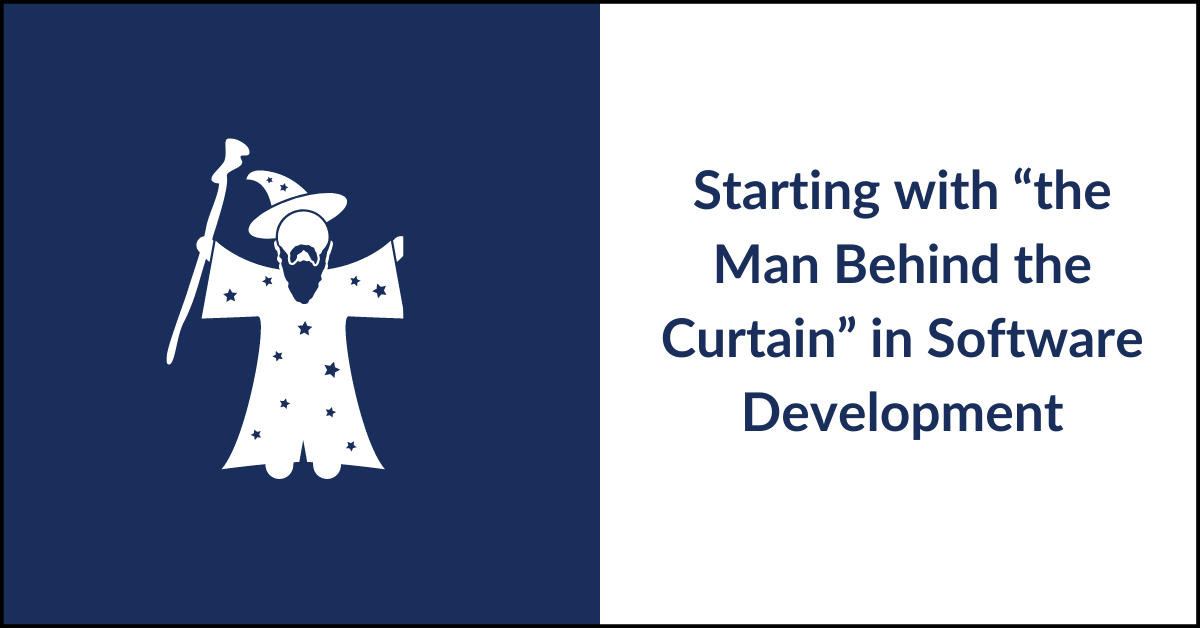
Most of us have seen The Wizard of Oz. Even if you’ve never actually sat down to watch it, you likely get the common references: “There’s no place like home,” “We’re not in Kansas anymore,” and “Follow the
yellow brick road.” At the end of the movie—this could be considered a spoiler, but you’ve had more than 80 years to watch it—it’s revealed (by the cutest character, Toto) that the wizard is just a guy operating a bunch
of controls behind a green curtain.
How, you may ask, does this apply to software?
Let’s take our own walk down a yellow brick road of analogies and stories about how software gets built.
MVP: Minimum Viable Product
When you’re building a custom software system, you don’t (or shouldn’t) build it all in one fell swoop. Ideally, you build it in iterations, using agile/scrum, and working in priority order. By building this way, you can get the software into the hands of users as soon as possible, even if it doesn’t have every single planned feature ready.
The initial version that’s released into the world is called a minimum viable product (MVP).
An MVP is great for gathering feedback, identifying problems, testing hypotheses, and more. It helps make sure you’re not spending time building features your users don’t need or want.
Do You Need Custom Software?
Is your team always answering the same questions or helping customers with the same tasks? See whether custom software could help streamline things for you and your customers.
Sleight of Hand Magic
One concept in agile software development that’s sometimes utilized with MVPs is the idea of the “man behind the curtain.” Like in the Wizard of Oz, it can appear as though things are happening magically in the software, even if there’s
actually a human on the other side pulling levers.
This analogy is twisting and turning more than the yellow brick road, so let me give you an example.
Have you ever used a website that matches you with something, based on information and answers you provide? Whether it’s an insurance plan, a new car, or a dog walker, the technology may or may not be making the recommendations programmatically.
In some cases, especially when a system is new, the matching happens behind the scenes with the help of a human.
Let’s use a hypothetical car matching site. Once a user answers questions about what kind of car they’re looking for, the site could provide recommendations in a few different ways:
Artificial intelligence (AI) that matches a user’s wants with what’s available in real time
An algorithm that shows recommendations based on a limited, static selection
A human reviews the user’s submissions and sends recommendations, either live or at a later time
Starting Manual
We work with our clients to build custom software systems iteratively, starting with the highest priority items
and learning as we go.
When we built the first version of the Peterson Genetics product guide,
data upload functionality didn’t make the cut for launch, so we became the “man behind the curtain”—uploading new product data each season. After a few years of uploading data on the backend, and iterating to optimize the
process, we had the workflow down pat. Using our experience, we were able to build an upload process for the client that they now use to import data quickly and easily without having to involve us.
Man behind the curtain works well for ideas you want to integrate into a system but either don’t have the details fleshed out or aren’t sure if it’s worth it to automate. You can give the user a simulated experience on the front
end and refine your processes on the backend—behind the curtain.
In our own project management workflow, almost every new idea starts as a manual process. We push buttons and pull levers until we know what works and what doesn’t, at which point we move on to automating what we found works. If Toto looked
behind the curtain of our software development processes, he’d find a kick-ass team and workflows in every
stage of automation.
Step by Step
With software development, it’s important to work in munchkin-sized iterations, moving down the yellow brick road step by step—preferably in a jaunty “we’re off to see the wizard” style, with stops to apply oil as needed.
Just like The Wizard of Oz teaches us, we’re not perfect, and our minimum viable software systems don’t have to be either.
If you have an idea for software that can improve your business, reach out. The wizard will see you now.